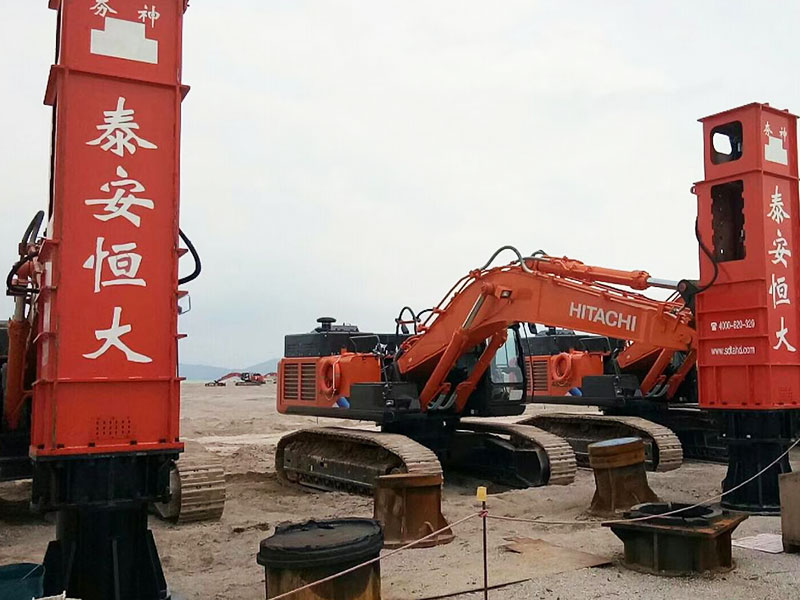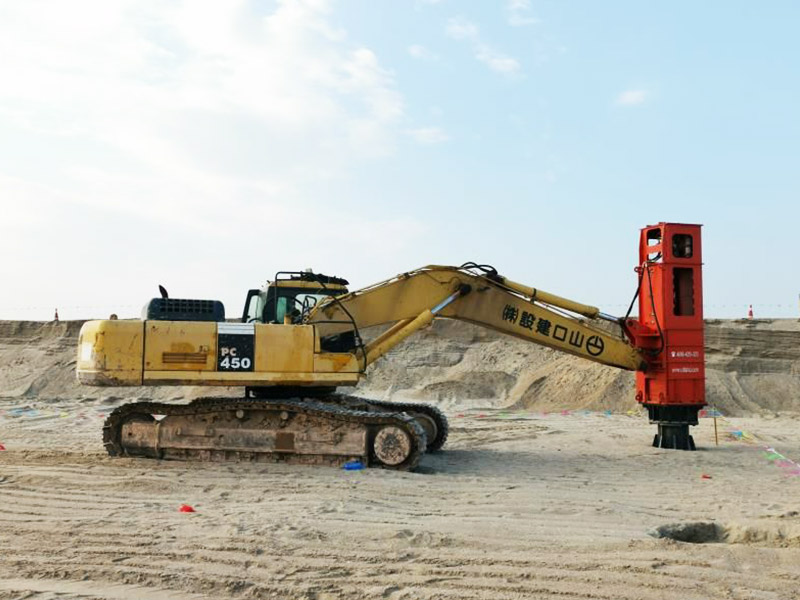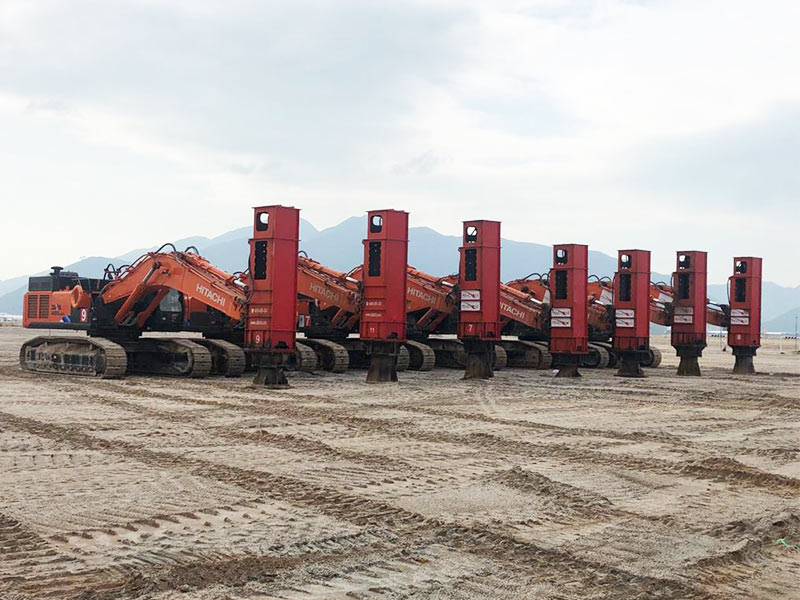update time:2023-02-14 15:24:25
Views:1314次
Deep compaction due to vibration may also be achieved penetrating a hollow steel tube into the soil,...
Deep compaction due to vibration may also be achieved penetrating a hollow steel tube into the soil, a method referred to as Terra-Probe; the steel tube is vibrated down to the desired depth and then drawn up again while the hollow steel tube is vibrating; this procedure is repeated several times to get the required degree of compaction. In this technique the vibrator is mounted on the top of the stell tube and imparts vertical, rather than horizontal vibration, resulting in a much smaller area of influence. A spacing of 1.5 m is typically adopted when using the Terra-Probe equipment in favourable conditions; the greater quantities are compensated in part by the greater speed compared to vibrofloatation.

Rapid Impact Compaction (RIC) is an innovative dynamic compaction device mainly used to compact sandy soils, where silt and clay contents are low. RIC closes the gap between the surface compaction methods (e.g. roller compaction) and the deep compaction methods (e.g. deep dynamic compaction) and permitting a middle-deep improvement of the ground. RIC has been used to treat a range of fills of a generally granular nature and some natural sandy and silty soils.

RIC is the right answer when:
■ Over-excavation and replacement is not feasible due to environmental or practical reasons
■ Safety is an issue (no weight falling from great heights)
■ Vibrations need to be managed (< 2 ips at 30 feet)
■ Specific levels of improvement are required
■ Compaction energy needs to be carefully controlled

Use of RIC will result in an increase in soil density, stiffness, and angle of internal friction as measured by an increase in SPT N-value, CPT tip resistance or other means of insitu test. The recommended approach is to determine what level of improvement is desired and discuss that required improvement with your technical representative for feasibility. For example, a 2-story commercial light industrial structure is to be constructed on a site underlain by up to 10 ft of existing sandy fill soils. SPT N-values range between 4 and 8 blows per foot (bpf) in the fill. The geotechnical engineer’s correlation between SPT N-Value and soil stiffness for footing settlement analyses indicates that an average N-value in the fill needs be 10 bpf. The geotechnical engineer would perform settlement analyses using the foundation sizes and loading provided by the structural engineer to confirm that the footings will perform acceptably if the fills are improved to 10 bpf. A review of the borings logs indicates that this level of improvement is achievable with RIC. The geotechnical engineer would then complete his or her report with a recommendation that RIC be used to compact the fills in place and that an N-value of 10 bpf will be required.

One advantage of RIC is that the drop height and number of blows can be varied based on the soil conditions. Through a test program, we will work with the Geotechnical Engineer of Record (GER) to determine the appropriate improvement criteria and RIC set-up for various areas of the site. For a site with a mixed soil profile and varying thicknesses of sand and clay, the ability to accurately control the amount of energy delivered to the ground is critical as it allows one to improve the loose overlying loose soil without liquefying the fine grained soils below – providing more uniform compaction.

The energy and deflection of the soil is monitored and recorded at each location, which allows the geotechnical engineer to determine when effective treatment is complete. It also enables the engineer to identify weak zones (red dots) or debris zones throughout the pad so that any remedial actions that may be required can be minimized resulting in cost savings.
Should I wet gravel before compacting? - HENGDA RIC
Rapid Impact Compaction (RIC) is an innovative dynamic compa...
How deep can compactor compact? - HENGDA RIC
A rule of thumb is that a compactor will compact 1 inch of m...